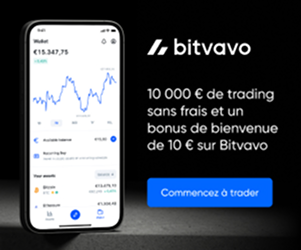Buy ETFs, trade ETFs and invest in ETFs: These securities are advertised everywhere. They are presented as simple, easy-to-trade funds that are also suitable for beginners or newcomers.
What's behind ETFs?
This term refers to exchange-traded funds, which are index funds traded on an exchange. When you buy an ETF, you exactly replicate an index, such as the DAX, which makes this type of investment particularly easy to understand. If an index, such as the DAX, rises by 10% over a given period, for example, the ETF that tracks it also rises by the same amount. Of course, an ETF is a fund in which, as a rule, you only buy or sell a share of the fund, not the whole fund. Before you take active steps and start buying ETFs, there are a few things you need to consider first.
Securities account with a bank or broker
The basis for buying and selling ETFs is a securities account. If you don't yet have a securities account, it's worth comparing the many offers from different banks and online brokers. The differences are considerable, especially when it comes to custody fees. Compare the securities account fees you have to pay by comparing different providers. You can find our securities account comparison here. Also pay attention to the services offered. The various comparison portals and user reports present different experiences with the respective providers and give both recommendations and warnings. You can find our readers' reports here.
Pay attention to a clear trading platform and the fees incurred for managing the securities account and the corresponding order. Is German-speaking customer service readily available? What about the broker's security? Is it regulated by the financial supervisory authority?
Take note of the ETF fund selection provided by the respective provider. Check whether the provider also offers an ETF savings plan. Are there comprehensible instructions so that you can trade safely?
Open a deposit account
Once you've compared the various providers and chosen the bank or broker that's right for you, the next step is to open a securities account. This is usually done online via the provider's website. Look for structured, clearly understandable instructions to guide you through the registration process. For more detailed advice, you can also visit a bank branch.
On the bank's website, click on the "Open a securities account" menu, then enter your personal details. Once you've entered your personal details, you'll usually receive an e-mail asking you to confirm your registration. You will then need to identify yourself to the bank using the Postident, video or Webident procedure.
Once you have been legitimized, you will receive your access data by mail, which you can use to log on in future.
Selecting the right ETFs to buy and sell
Once you've opened a deposit account, you can choose which of the many ETFs offered by your provider are right for you.
Ask yourself what stocks you want to invest in. For example, if you decide to invest in German equities, you can choose a DAX ETF. If you want to invest in the global economy, an ETF on the MSCI World index may be of interest. Are you interested in geographic specificities, such as certain countries or regions? Would you like to invest in a specific industry sector? Also pay attention to the fluctuation range (volatility) of the ETF concerned.
Choosing the right index
Pay close attention to the various indices, and focus first on the well-known stock market barometers. Most indices track market capitalization. The greater the number of shares in a company and the higher its market price, the greater the weighting in the corresponding index.
Cost analysis
When you buy ETFs, you pay much lower fees than for actively managed funds. You can find the fees on the bank's or broker's website under the designation "TER", which stands for total expense ratio.
Placing a purchase order for an ETF fund for the first time.
Once you've found a provider for your custody account, opened one and know which ETFs you want to buy, it's time to place the first trading order. This is usually done online via your broker's or bank's trading platform. It's also done online by clicking on the ETF you've selected on the user interface. You then provide a few additional details. You'll be asked how many ETF units you want to buy, whether you want to set a purchase limit and on which exchange you want to buy the fund. Once you've provided all the required information, you confirm the order, which is usually transmitted immediately to the exchange. The execution is recorded shortly afterwards, and you will find the ETF fund you have purchased in your securities account.
Buying ETFs – trading or savings plan?
Do you simply want to buy ETFs, or do you want to set up a savings plan? If you want to set up an ETF savings plan, you can set up a few funds into which you save every month or at longer intervals. Here, too, you need to compare the different providers.







